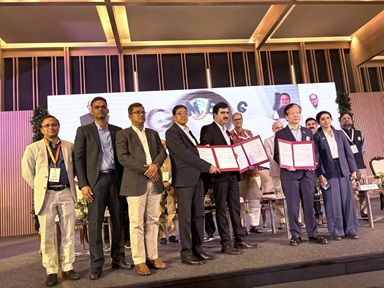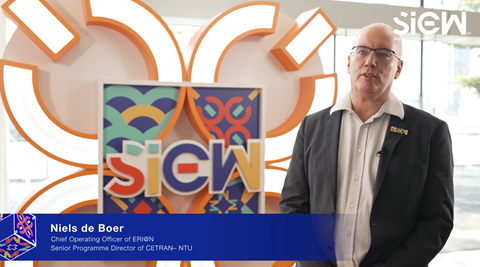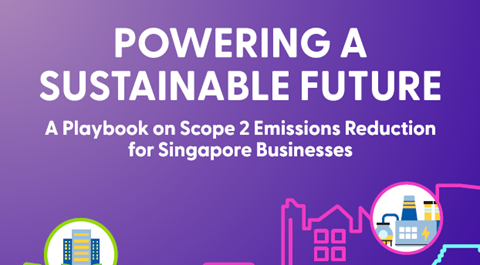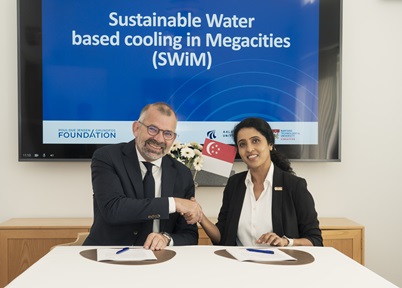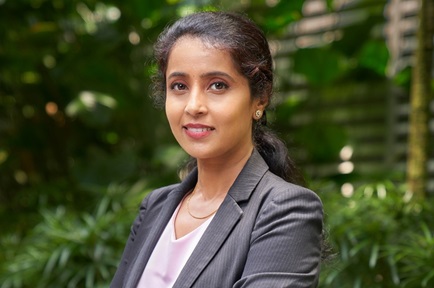Pilot recycling plant uses peels of lemons, oranges and pineapples to recycle batteries
First published on The Straits Times
 NTU researchers Prof Dalton Tay (left) and Prof Madhavi Srinivasan (right), along with Mr Vince Goh, managing director of recycling plant SWM. ST PHOTO: RYAN CHIONG
NTU researchers Prof Dalton Tay (left) and Prof Madhavi Srinivasan (right), along with Mr Vince Goh, managing director of recycling plant SWM. ST PHOTO: RYAN CHIONGSINGAPORE - The use of oranges, pineapples and lemons to break down and recycle spent batteries is one step closer to becoming a reality.
Work is underway at the first facility of its kind in Singapore after researchers from Nanyang Technological University (NTU), who first pioneered the battery recycling process in 2020, struck a partnership with a local recycling plant to take their concept to the next level.
Together with battery recycling facility Se-cure Waste Management (SWM), which processes about 18 tonnes of spent batteries daily, NTU plans to commercialise the process by 2024 and sell the recycled materials to battery makers around the world.
The process aims to tackle both food wastage and spent batteries, which are in short supply amid an electrical energy boom and can generate toxic waste when thrown away.
Less than 5 per cent of used lithium-ion batteries are recycled and the volume of these spent batteries is estimated to reach 11 million tonnes by 2030 worldwide, said SWM and NTU.
The recycling plant, which has been in operation since late 2022 near Pioneer, can process up to 2,000 litres of old shredded batteries at a time, using a solvent made of fruit peels, they added.
The process starts with the shredding of used batteries, from which plastics and metals like copper and aluminium are separated.
Around 90 per cent of the such metals found in lithium-ion batteries can be recovered and reused.
The recovered content – called black mass – is dissolved in chemical concoctions derived from fruit peel waste. This mix, made of fruits with high acidity, is designed to extract metals used for battery electrodes, such as cobalt, lithium, nickel and manganese over low heat.
Fruit peel is typically rich in sugars and natural acids that can boost the dissolution and recovery of metals from battery waste.
The precious metals are then precipitated into metal salts that can then be used in new lithium-ion batteries.
 NTU researchers have found a way to recycle battery parts using fruit peels, and have signed an agreement with a recycling plant to bring it closer to commercialisation. ST PHOTO: RYAN CHIONG
NTU researchers have found a way to recycle battery parts using fruit peels, and have signed an agreement with a recycling plant to bring it closer to commercialisation. ST PHOTO: RYAN CHIONGEarly tests showed that batteries made with the recovered metals had a similar charge capacity to commercial batteries.
The NTU researchers, led by Associate Professor Dalton Tay, used oranges in their proof-of-concept research in 2020, but have found that lemons and pineapples can also be used in the extraction process.
 Samples of precipitated metal salts from recycling spent lithium-ion batteries at the Se-cure Waste Management recycling plant. ST PHOTO: RYAN CHIONG
Samples of precipitated metal salts from recycling spent lithium-ion batteries at the Se-cure Waste Management recycling plant. ST PHOTO: RYAN CHIONGThe wider selection makes it easier to source for fruit waste, which is currently taken from a partnering supplier, said Prof Tay, who is from the School of Materials Science and Engineering and the cluster director of the Energy Research Institute at NTU.
The research is supported by Singapore’s National Research Foundation and the National Environment Agency under the Closing the Waste Loop Funding Initiative.


